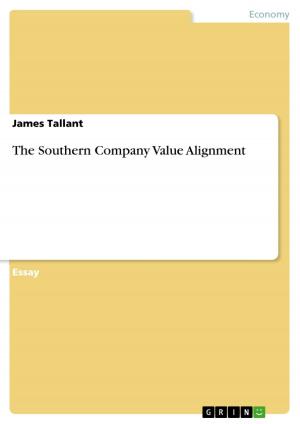The Enterprise Valuation Theory and Practice
Business & Finance, Management & Leadership, Management| Author: | Alina Ignatiuk | ISBN: | 9783640362011 |
| Publisher: | GRIN Publishing | Publication: | June 30, 2009 |
| Imprint: | GRIN Publishing | Language: | English |
| Author: | Alina Ignatiuk |
| ISBN: | 9783640362011 |
| Publisher: | GRIN Publishing |
| Publication: | June 30, 2009 |
| Imprint: | GRIN Publishing |
| Language: | English |
Seminar paper from the year 2008 in the subject Business economics - Business Management, Corporate Governance, grade: A, St. Mary's University San Antonio, Texas, language: English, abstract: In a market-driven economy investors are looking for the most profitable placement of their capital. This leads to a redistribution of the recourses on economy-wide scale from industries and companies which use investor's capital inefficiently and destroy wealth to industries and companies which use investor's capital efficiently and create wealth. For corporate managers, wealth creation is fundamental to the economic survival of the firm. As suggested by Rapport (2006, pp.67-68) managers that fail (or refuse) to see the importance of this imperative in an open economy do so at the peril of the organization and their own careers. There are several analytical tools which can help to make wise decisions in this field. They range from traditional Dividend Discount model and Free Cash Flow (FCF) model to not so long ago created Economic Value Added (EVA) model of enterprise valuation. At the same time in line with theoretical models for valuing companies there is a market value for companies derived from market supply and demand for their stocks. In general, if we again refer to 'one value principle' described in Grant (2003, p.106), both theoretical and market approaches have to lead to the same results. But in reality there is always some discrepancy in those two values which is a result of the influence of the number of factors. Identification and analysis of those factors is of key importance for investors to discover the most profitable investments and for the economy to ensure the most efficient use of capital. The discrepancy between theoretical and market value of the company, however, should not last forever. If it happens then capital market will be sending wrong signals to the investors about on the one hand industries with high potential which use capital productively and create economic profit and on the other hand industries with low potential who waste capital and achieve economic loss. This would lead to a situation when productive industries will face a deficit of capital and unproductive industries will face a surplus of capital. Such inefficient distribution of capital finally would be a threat for the development of a real sector of the economy.
Seminar paper from the year 2008 in the subject Business economics - Business Management, Corporate Governance, grade: A, St. Mary's University San Antonio, Texas, language: English, abstract: In a market-driven economy investors are looking for the most profitable placement of their capital. This leads to a redistribution of the recourses on economy-wide scale from industries and companies which use investor's capital inefficiently and destroy wealth to industries and companies which use investor's capital efficiently and create wealth. For corporate managers, wealth creation is fundamental to the economic survival of the firm. As suggested by Rapport (2006, pp.67-68) managers that fail (or refuse) to see the importance of this imperative in an open economy do so at the peril of the organization and their own careers. There are several analytical tools which can help to make wise decisions in this field. They range from traditional Dividend Discount model and Free Cash Flow (FCF) model to not so long ago created Economic Value Added (EVA) model of enterprise valuation. At the same time in line with theoretical models for valuing companies there is a market value for companies derived from market supply and demand for their stocks. In general, if we again refer to 'one value principle' described in Grant (2003, p.106), both theoretical and market approaches have to lead to the same results. But in reality there is always some discrepancy in those two values which is a result of the influence of the number of factors. Identification and analysis of those factors is of key importance for investors to discover the most profitable investments and for the economy to ensure the most efficient use of capital. The discrepancy between theoretical and market value of the company, however, should not last forever. If it happens then capital market will be sending wrong signals to the investors about on the one hand industries with high potential which use capital productively and create economic profit and on the other hand industries with low potential who waste capital and achieve economic loss. This would lead to a situation when productive industries will face a deficit of capital and unproductive industries will face a surplus of capital. Such inefficient distribution of capital finally would be a threat for the development of a real sector of the economy.















